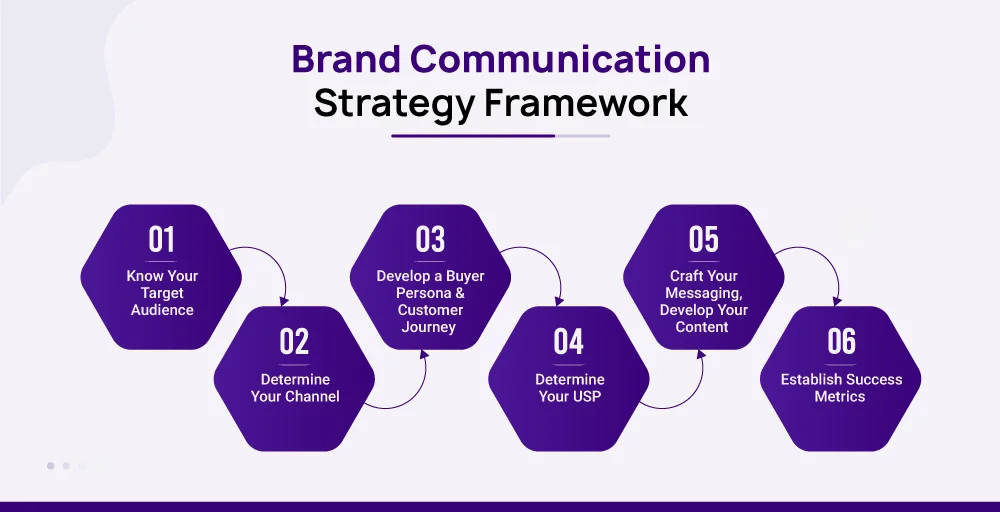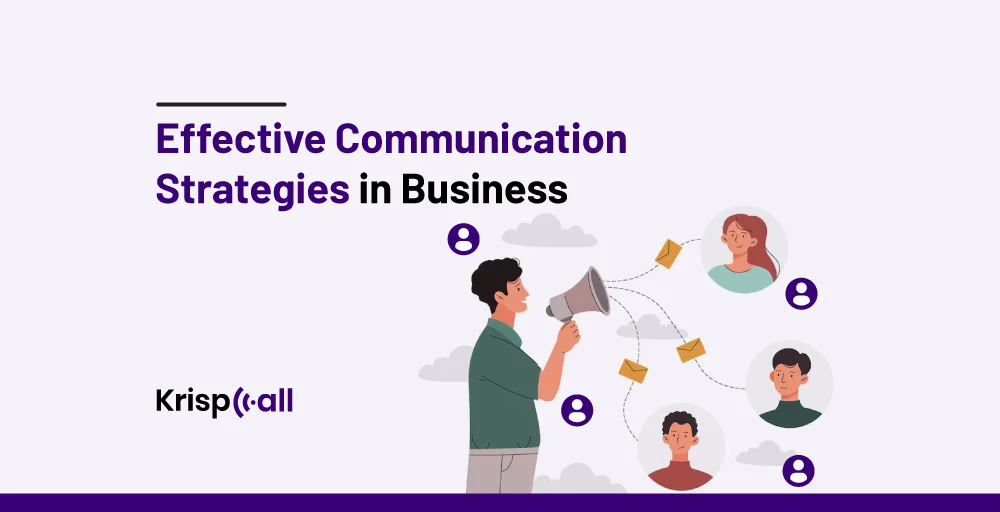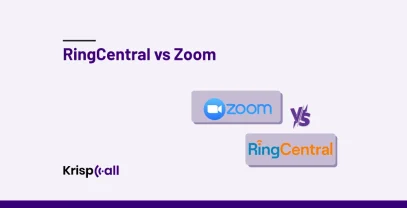In this world 🌏 of articulate individuals, It doesn’t matter if you’re sharing ideas, making deals, or just chatting with others – What matters is how you say things.
Almost all people know how to 🗣 communicate, close deals, or any personal communication, but they don’t know how to do that same thing effectively, which can bring the result 100%.
In this article, you will explore some of the major points of communication strategies that will help in your professional and personal life.
🔑 KEY HIGHLIGHTS
- A communication strategy is a plan designed to convey information or messages to the target audience.
- Good communication contributes to personal development, reduces misunderstandings conflicts, and has a positive impact on health.
- Developing a communication plan involves various factors, such as timing, technology, tone of voice, etc.
What is a communication Strategy?
A communication strategy is a plan designed to convey information or messages to the target audience. It includes three crucial factors: message, communication channels, and audience through your communication process. However, your communication interactions need clear messages and purpose, like how, why, what, and who, to make your communication strategy more effective.
Here is a simple communication strategy example from 👦 John about how he developed and implemented his communication strategies.

- Objective: John wants to boost customer awareness and loyalty to his bakery.
- Target audience: Local residents or nearby houses.
- Key message: Fresh baked goods and promotion.
- Channels: John plans to use social media, including Instagram and Facebook.
- Timing: Regular social media post and monthly give away.
- Feedback: John encouraged customers to leave reviews on social media
- Crisis Plan: In any complaints, he has a plan to handle them professionally.
Importance of Effective Communication Strategies
Communication is crucial in daily life, whether dealing with a client or developing any professional relationship. Good communication contributes to personal development, reduces misunderstandings conflicts, and has a positive impact on health.
A business that prioritizes communication strategies can experience positive outcomes and benefits. Communication strategies in business enhance productivity and foster a collaborative environment where many members can work together.
Types Of Communication Strategies
There are many types of good communication strategies; however, the two main types of effective communication strategies in the workplace are:
1. Internal communication channel strategy
The internal communication channel is a plan for how the organization will smooth the flow of information among its employees, including optimizing call flow in call centers. This internal comms strategy ensures that communication is effective by understanding the audience and choosing appropriate channels.
2. External communication channel strategy
The external communication channel is a plan for how an organization communicates with individuals outside the company, including clients, media, and investors. The external comms plans to ensure the target audience, analysis, and customer feedback.
11 Proven effective communication strategies for Business
To make effective communication, it need practice on both internal and external communication strategies. Over time and with dedication, you will express ideas, thoughts, actions, and opinions more effectively in both your personal and professional life. 💪

Some of the proven strategies for effective communication in an organization are:
1. Active listening
Try to engage in conversation by listening to the words and understanding the speaker’s intentions. Ask rightful questions and demonstrate your interest. Look for opportunities while you are listening, navigate through potential misunderstandings, and create a supportive environment. Do not hesitate to raise questions if you get confused. This approach fosters a deeper connection between individuals, promoting trust and empathy.
2. Clear and concise messaging
Break down complex ideas into easily understandable points. Make sure that your message is straightforward. Clear and concise messages reduce the risk of misunderstandings and improve overall understanding. Clarity messages hold attention, keeping your audience engaged and responsive to your ideas. Revise your message to ensure that it is understandable and uses proper grammar.
3. Timing and relevance
Timing and relevance are two of the most effective communication strategies. Choose the right moment to deliver the message. Timing plays a pivotal role in capturing audience attention; make sure to share your message when it will be the most effective. Relevance is equally crucial. Customize your communication to address your audience’s specific needs and interests.
4. Get them involved
Encourage the participants to ask questions or give feedback to create a two-way communication flow. When people are involved, they feel more connected, as if they are part of the team. This is good because it helps everyone understand each other and makes communication more effective. So, involving everyone not only makes the conversation more interesting but also helps everyone work together.
5. Make eye contact
Making eye contact during the conversation builds trust and confidence in the communication. If you want to know if the person you’re talking to understands you, just look at their eyes. You can see if they are paying attention, worried, or confused. This is something you might miss when talking online. Moreover, eye contact serves as a valuable gauge for understanding the listener’s response.
6. Use of technology
Use digital communication platforms such as mail, instant messaging, and collaborative platforms. These platforms facilitate quick and efficient communication, enabling real-time interaction among team members. Implement automation tools for routine communication tasks, such as sending updates or reminders.
7. Consider your tone of voice
Be sensible about how your voice conveys your message, whether it’s the tone of your voice or the words you write, and it’s crucial that they align with the message you want to convey. Speaking warmly and or confidently can help people understand you better. In writing, the words you choose also create a tone. Using clear and respectful words makes your message more positive.
8. Clarity in written communication
Writing clearly and using proper grammar structure makes your message more straightforward and accessible to the reader. The clear message reflects professionalism, establishing you as a reliable and competent communicator. Clear communication helps maintain consistency in messaging. Whether it’s internal memos, external communications, or marketing materials.
9. Use various methods of communication
Try to use multiple methods of communication, such as written, verbal, and visual, to cater to diverse learning and communication styles. This communication strategy ensures that your message has its own way of understanding things, and using various methods makes sure everyone gets the message in a way that works for them.
10. Open communication channels
Encourage others to share ideas and concerts freely, making a transparent environment. Encouraging open communication fosters a culture of transparency, where information flows freely, leading to better collaboration and understanding within the team or organization.
11. Seek and deliver feedback.
Asking for feedback on your communication definitely improves your communication skills, especially if you are struggling with your verbal communication. Also, provide timely and constructive feedback to others, fostering continuous improvement in communication skills.
5 ways to overcome barriers to communication
Communication barriers can be anything that makes it difficult to understand during conversations. It can be physical, language, or emotional. These barriers stop ideas and feelings from being shared. It is important to know about and fix these barriers so that communication can be clear and meaningful.
1. Building Trust Through Emotional Connections
Building trust is an effective way to overcome barriers and share thoughts and feelings without fear of judgment. Trust creates an environment where people are more patient and willing to clarify. It helps in team collaboration, reduces misunderstanding, and resolves conflict.
2. Cross-Cultural Emotional Intelligence
Different cultures may have distinct communication norms and styles. Cross-cultural emotional intelligence equips individuals to adapt their communication approaches, ensuring messages are conveyed effectively and respectfully. These skills build trust, resolve conflict, and make working together soother.
3. Technology Integration
Using technology is the best way to overcome communication barriers. Use tools like messaging apps, video calls, and emails to ensure smooth communication. Technology also helps those with communication challenges, and virtual reality makes online interactions more engaging. It’s like a helpful tool that makes communication easier for everyone.
4. Inclusive Language
Always avoid offensive or sensitive language. This minimizes the potential for miscommunication or intentional harm. When people feel respected and included, they are more likely to express themselves openly, leading to clearer and more effective communication.
5. Conflict Resolution Skills
Understand your communication style that triggers responses. Train yourself to be an active listener. Learn to give and receive feedback in a constructive manner. Address minor conflicts as they arise, practicing the techniques you’ve learned.
What are the tips to keep audiences engaged when you speak?
The audience easily feels bored while communicating or having conversations. Keeping audiences engaged is difficult work, but it can be done easily with the right practices.

Let’s explore some easy ways to make sure your talk is not just informative but also enjoyable, leaving everyone happy and eager for more.
- Encourage interactions: Cheer your audience while communicating by asking questions, conducting polls, or encouraging brief discussions. Make your verbal communication strategies dynamic, and share your stories to make two-way communication. This dynamic engagement not only keeps your audience attentive but also makes the communication experience more enjoyable and memorable for everyone involved.
- Use visuals: Use sliders, images, or charts to engage your audience and make your message easier to understand. Adding visuals while having conversations grabs the attention and explains things more easily. These visuals grab attention and help explain things more interestingly. So, let’s make your talk not just words but a colorful and exciting experience for everyone listening!
- Move around: If possible, move your body while communicating. Physical movement grabs the attention and energy of your conversations. Use your hands if you are in a virtual meeting. This keeps people interested and shows you’re excited about what you’re saying. So, let’s make your talk a lively chat where your words come to life!
- Express your passion and enthusiasm: Expressing your passion and enthusiasm is like sharing your excitement with others. When you talk about something you really love or care about, let that enthusiasm show! Speak with energy and genuine interest in your topic. Make the moment cheerful and exciting for your audience.
Conclusion
Communication plays a crucial role in daily life and is key to the success of every business. Developing a communication plan involves various factors, such as timing, technology, tone of voice, etc. However, some barriers make it difficult to communicate, but simple communication strategies can fix them.
It’s common for your audience to feel uninterested during conversations. To counter this, always express your passion and enthusiasm. When you speak with genuine excitement, you do not only captivate your audience but also transform the conversation into an engaging and memorable experience.
FAQ
Which communication strategies do not involve speaking?
There are several communication strategies that do not involve speaking are
- Eye contact
- Text Messages
- Gestures
- Visual arts
- Facial expressions
What is the communication strategies definition?
Communication strategies refer to the techniques or methods of effectively transferring information and ideas to build a relationship or achieve a successful interaction.
What are communication plan examples?
Communication plans in a company can be inside or outside the company. Inside plans are about team updates. They might happen every week, in a meeting, or through chat. Outside plans are about talking to people outside the company. This could be sharing news or updates with customers, partners, or the public.
What are effective communication strategies in the workplace?
Some of the effective communication techniques in the workplace are
- Regular team meetings
- Use visual aids
- Choose appropriate channels
- Encourage two ways of communication





